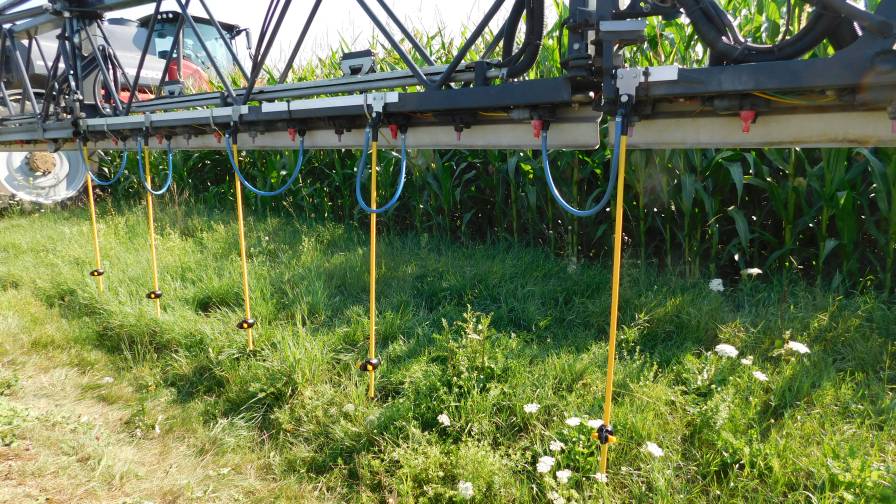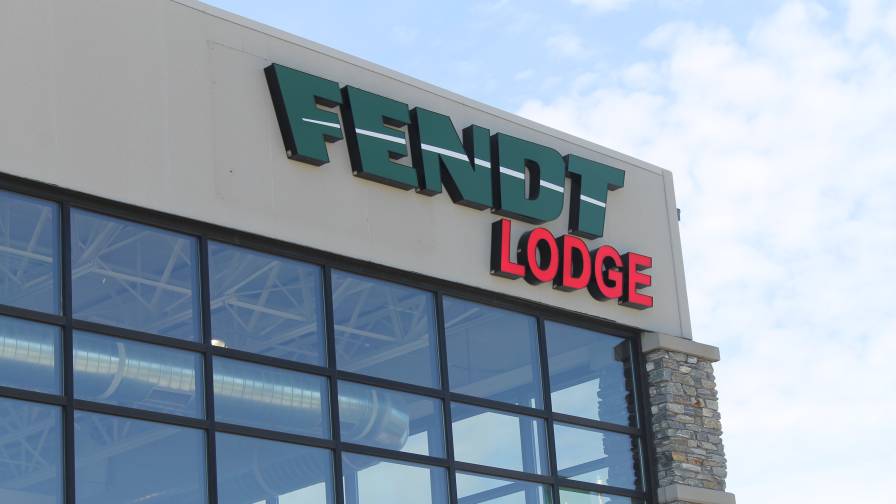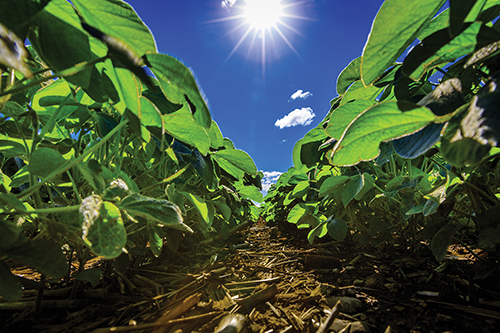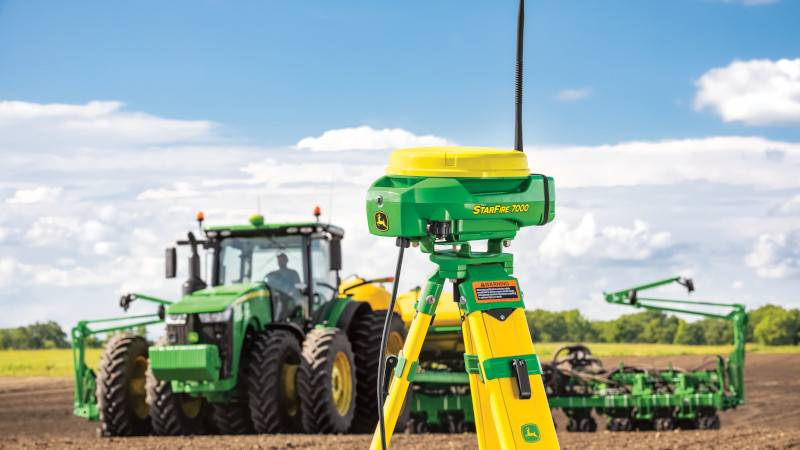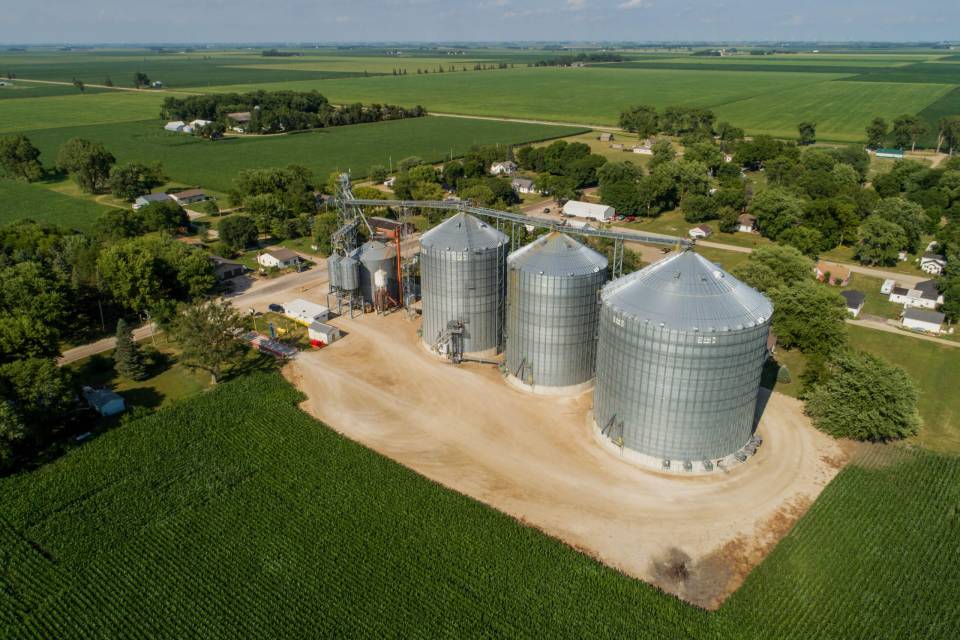Spot Spray Solutions Gain Market Share in North America
The interest in spot spray solutions coupled with a growing number of providers is resulting in faster adoption throughout the North American market.
Trimble entered the market with its WeedSeeker spot spray solution several decades ago and introduced the next generation WeedSeeker 2 in 2019.
Initially, the WeedSeeker 2 experienced quick adoption in Latin America and the APEC (Asia Pacific Economic Cooperation) regions, explained Trimble’s Doug Daws, Director of Product Management, Crop Production Cycle.
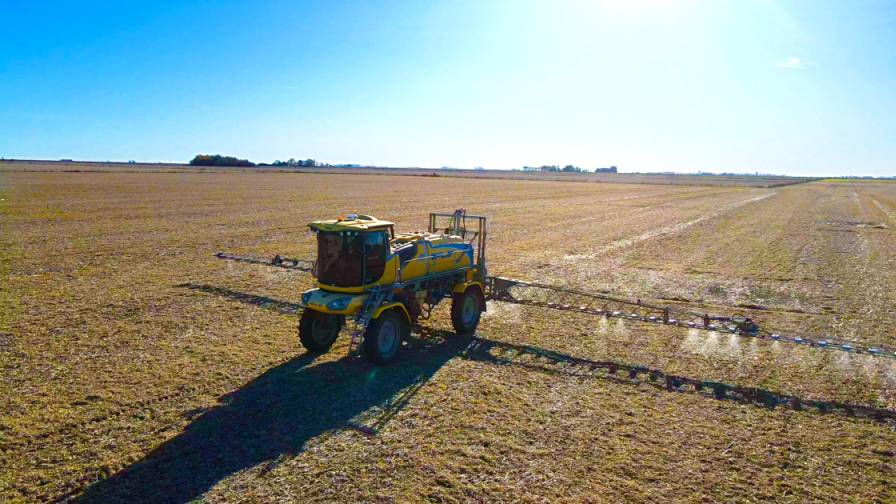
Initially, the WeedSeeker 2 experienced quick adoption in Latin America and the APEC (Asia Pacific Economic Cooperation) regions, Photo credit: Trimble
Although the technology originated in North America, the climate and farming practices associated with those particular global regions facilitated early adoption and “better positioning of the WeedSeeker 2 in those markets,” said Daws.
For example, Australia generally receives less precipitation. Summers are dry and hot and conventional broadcast spraying to control weeds in fallow fields is costly. Spot spraying is more cost effective not only because less herbicide is used, but herbicide resistant weeds can be better controlled with more expensive chemicals whose higher cost is offset when less herbicide is required overall. Like Australia, Argentina typically practices no-till agriculture, said Daws.
At the same time, minimum-till practices in states like Kansas, Montana, and North Dakota, “are also perfect for some of these green-on-brown situations,” he added, which is contributing to a “rapid uptake [of the WeedSeeker 2] here in North America.”
The WeedSeeker 2 boasts several features and enhancements over the previous version, including a lighter weight. Trimble’s Justin Prickel, Product Team Manager, Application Controls, said the lighter weight was one of the most substantial changes for the newest system, which equates to less modification to older booms in the way of bracing or retrofitting. The universal mount also supports easy installation.
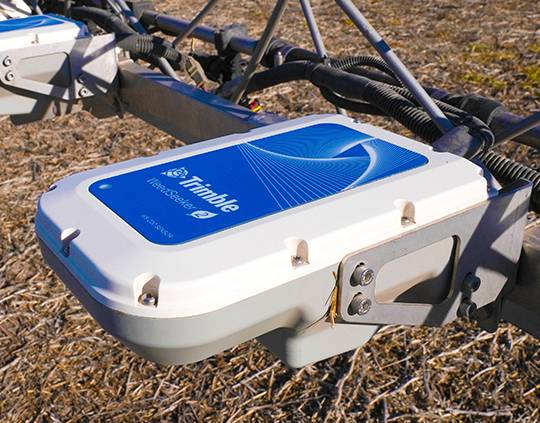
A close-up of the WeedSeeker 2. Photo credit: Trimble
In addition, the lightweight sensors have an expanded coverage area the matches the industry standard 50-centimeter spacing of spray nozzles. WeedSeeker 2 is also ISOBUS compatible. With the previous version, “there really wasn’t a display or user interface,” acknowledged Prickel. “It was just a couple of knobs and settings.”
ISOBUS compatibility means a new display is not required. Rather, any existing ISOBUS compatible display can be used to monitor and control the system. The significant improvements to WeedSeeker 2’s UI/UX have resulted in a system that is simple, intuitive, and easy to use, allowing people of any skill level to track herbicide use and log coverage maps. Every weed that is sprayed is logged by the system so users can see in real time where there are problem areas and review detailed maps from records before the next spray.
Intelligent sensors also save time in the field by eliminating the need to recalibrate the WeedSeeker 2 system. Following a quick calibration after powering on, the advanced optical sensors automatically adjust on the run to changing temperature, ambient light, and backgrounds like soil or stubble, ensuring sensor accuracy in all conditions. Dynamic soil calibration and the use of NDVI to continuously improve accuracy makes the WeedSeeker 2 stand out from the previous version, said Prickel, not to mention the upgraded processing power that allows the sprayer to operate at speeds up to 25 miles per hour.
EVOLVING SPOT SPRAYER TECHNOLOGY
While WeedSeeker 2 was a considerable step forward in spot spraying innovation, camera-based systems will propel the next round of major advancements, said Daws.
“We’re really looking at two different types of technologies,” he said. One is the NDVI sensors for green-on-brown situations, while camera-based systems are the “upgrade path forward” and satisfy the interest that is being generated in the market. For instance, Trimble’s acquisition of Bilberry, a pioneer in applying AI that identifies a wide variety of weed species in real time for a broad range of crop types, extends Trimble’s crop protection portfolio by providing selective spraying to identify differences in plants (green-on-green) and can be used throughout the spraying season as well as prior to crops emerging.
Bilberry’s solution is also brand agnostic and compatible with a broad range of spraying equipment manufacturers, which is ideal for mixed fleet operations, noted Jim Chambers, Vice President of Trimble Agriculture, in a press release. In the meantime, ongoing changes in the global agriculture industry, including new regulations, are driving advancements and adoption of spot spraying technologies. Daws mentioned efforts by the European Union to reduce agrichemical use as an example.
Mexico remains committed to banning glyphosate beginning next year. Meanwhile, the European Commission is working to reduce the use of chemical pesticides in EU agriculture by 50% by 2030. Similar efforts to reduce agrochemical use is being seen in various countries worldwide.
Not surprisingly, the selective spraying market is “on the cusp of very rapid change,” remarked Daws, and growing awareness around sustainability, fresh food, and the larger cultural movement driving these efforts are likewise playing a part in the expansion of selective spraying.
“When we look at sprayer technology, including camera technology, along with the advent of artificial intelligence and machine learning, we’re going to see a lot of changes in the next two to four years,” said Daws. “Selective spraying has a lot of potential for a large portion of the global market. There are a lot of opportunities.”

